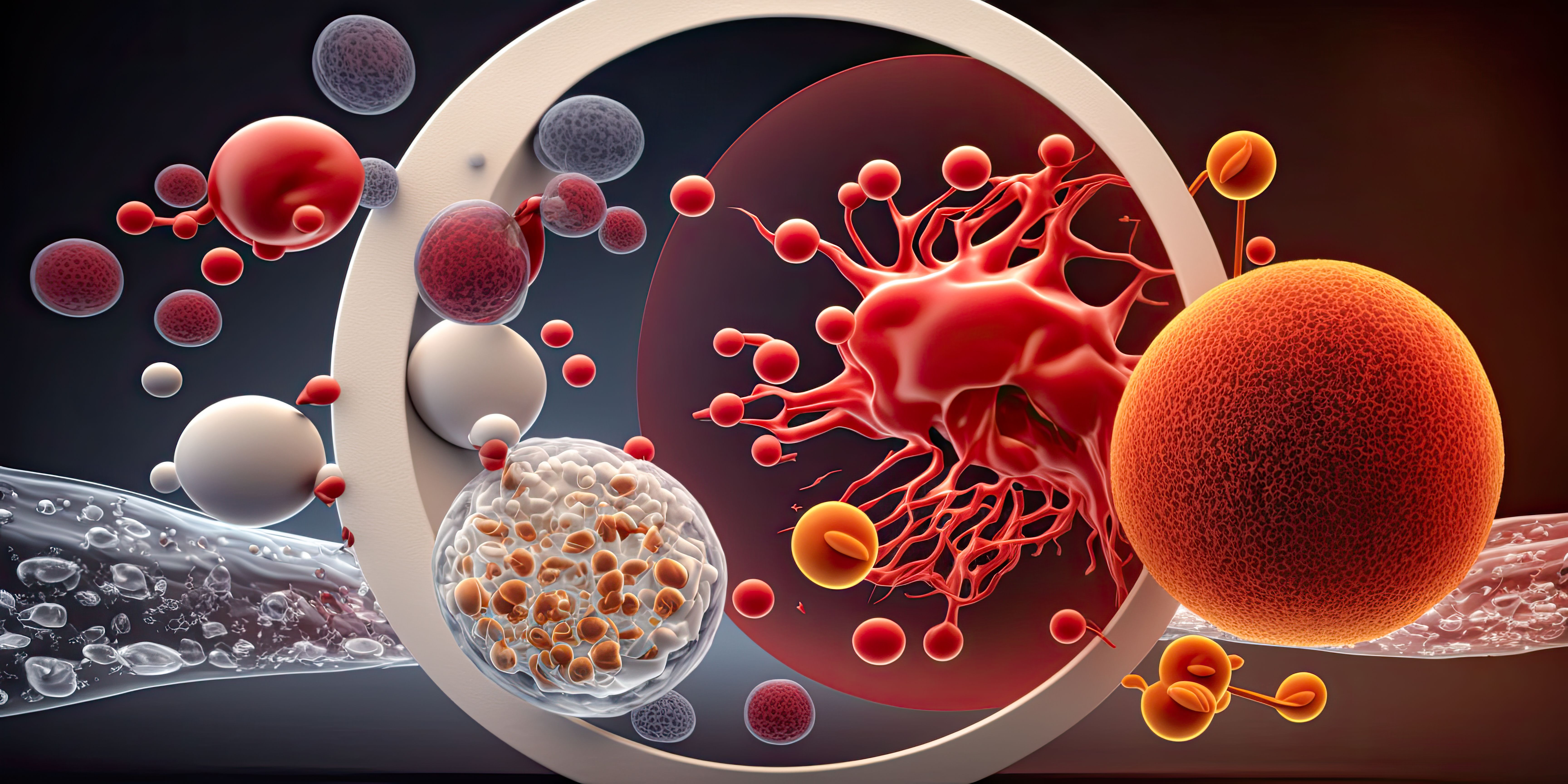Beat AML Study Highlights Influential Factors in AML Treatment
In an interview with Targeted Oncology, Ashley Yocum, PhD, discussed The Beat AML study and emphasized the significance of considering patient factors, such as age and genetic mutations, in treatment decisions.

Results from a large cohort of older patients with acute myeloid leukemia (AML) from The Beat AML study (NCT03013998) demonstrated that intensive chemotherapy yields the highest median overall survival (OS) for this patient population, showing the importance of pretreatment factors, such as age, performance status, and genetic mutations, in guiding treatment decisions for optimal outcomes.1
The Beat AML trial of biomarker-based treatments in AML is a precision medicine master trial that has been open for 7 years. Patients with newly diagnosed or relapsed or refractory AML included in the study are assigned to receive a biomarker-specific treatment within 7 days, based on targeted genomic sequencing in cytogenetics.
The recent analysis, presented at the 2023 American Society of Hematology (ASH) Annual Meeting, examined data from November 2018, emphasizing changes after FDA approval of venetoclax (Venclexta) and azacitidine. Patients were categorized into 3 treatment groups, including venetoclax with any hypomethylating agent, intensive chemotherapy, and non-intensive treatment.
Key findings highlighted factors influencing treatment selection, including age, performance status, and liver enzyme levels. Intensive chemotherapy showed the longest median OS at 33.8 months (95% CI, 30.7-not reached), while venetoclax/hypomethylating agent and non-intensive treatments had shorter survival times at 13.6 months (95% CI, 10.9-16.8) and 11.6 months (95% CI, 5.2-21.3).
Pretreatment features impacting survival included favorable mutations such as core-binding factor and mutated NPM1 vs unfavorable ones like TP53 and complex karyotype. Notably, patients unfit for chemotherapy demonstrated positive outcomes with venetoclax-based and non-intensive treatments.
Overall, this study suggests the importance of comprehensive patient data, including genetic tests and cytogenetics, for informed treatment decisions by oncologists. Ongoing research plans to examine novel agent combinations to further improve therapies for patients with AML.
In an interview with Targeted OncologyTM, Ashley Yocum, PhD, executive research strategy lead at the Leukemia & Lymphoma Society, discussed The Beat AML study and emphasized the significance of considering patient factors, such as age and genetic mutations, in treatment decisions.
Lymphology hematopoietic system, medical illustration - Generative AI: © jovannig - stock.adobe.com

Targeted Oncology: Please provide some background on the Beat AML study.
Yocum: Beat AML has been open for 7 years and we have collected a lot of data during this time. We have had 1400 patients enrolled under the master trial and assigned a biomarker-specific treatment. Not all the patients go on to a biomarker-specific treatment. Some in there were treated off protocol. So for these patients, we record what treatment they received off Beat AML and their overall survival. For the analysis that we [presented] at ASH this year, we looked at data collected from November 2018, for when venetoclax and azacitidine received accelerated FDA approval. We wanted to look at how that changed the landscape of how patients were assigned treatment.
We took these patients, and there were 468, and we split them up into 3 different treatment categories. The first was venetoclax with any hypomethylating agent, the second was intensive chemotherapy, and the third was non-intensive treatment. What we saw was that there are pre-treatment demographics and features of genetics that predetermine what kind of treatments they receive.
Can you discuss some of the recent updated data from the study?
Patients who have core binding factors received intensive chemotherapy. Younger patients received intensive chemotherapy more frequently later than the others. Patients who had a poor performance score or an increased performance score, as well as increased liver enzymes, including [aspartate transaminase] and [alanine transaminase], also received the non-intensive treatments. Based on this, we also saw that people who had TP53 or complex karyotype more frequently received the non-intensive treatment.
Age is a large determinant of what therapy a patient will get, as well as performance status and liver enzyme status. Those are the ones that we saw that had a significant difference of the P value of .01.
How did physician decision-making regarding therapy influence the overall survival outcome?
What we saw from this analysis was that patients who received intensive chemotherapy had a median overall survival of 33.8 months. Patients who received venetoclax and a hypomethylating agent had a median overall survival of 13.6 months. Then, the patients who received the non-intensive treatment had a median overall survival of 11.6 months.
Have pretreatment features impacted overall survival in this study?
From this analysis, we saw that pretreatment features that influence overall survival are based on already known favorable mutations, such as core-binding factor, mutated NPM1, and then those that were not favorable, being TP53 and complex karyotype.
What results were of particular interest to you?
What was interesting about these results is that we saw that patients who are not fit for chemotherapy, we were able to see what venetoclax and hypomethylating as well as the non-intensive treatment were good options for them, since they were not fit for induction chemotherapy.
Were there any specific therapeutic approaches or combinations that stood out and positively impacted overall survival?
For this particular analysis, we just looked at the 3 main treatment groups, including intensive chemotherapy, the venetoclax/hypomethylating agents, as well as non-intensive treatments. We did not further analyze if there was an addition of a targeted agent to these. What we did show in our data in 2018 as well as in our Nature Medicine 2020 paper is that biomarker approaches did increase overall survival when compared with standard-of-care. However, at that point, when we did the data pool, that was before venetoclax and azacitidine approval, so this is what we are looking for in future analysis.
We are pulling the data right now in order to do a publication. What we're finding is some pretty interesting data when it comes to the genetic subgroups of venetoclax and hypomethylating agents. We just do not have enough data to make any definitive conclusions or anything statistical with the combination of any novel agents with venetoclax and a hypomethylating agent.
For a community oncologist, what are the key takeaways from this research?
For our community oncologists, the key takeaways from this is to make sure that you have all the results for the patient. Do you have all the genetic tests back? Because we did see that NPM1 was more favorable, where TP53 was not. Do you have your cytogenetics? These are the things that [one is] going to want to look at, as well as the status of your patient. How was their performance status, what is their age, are they fit for induction chemotherapy? It is important for the oncologist to make sure they have all information available when making these decisions.
REFERENCE:
Borate UM, Huang Y, Welkie RL, et al. Influence of pre-treatment features and therapy choice by physicians on overall survival in older adults with acute myeloid leukemia: A report from the Beat AML Master Trial. Blood. 2023;142(suppl 1):4332. doi:10.1182/blood-2023-181886
Cretostimogene Grenadenorepvec Shows High CR Rate in BCG-Unresponsive NMIBC
July 17th 2024Mark D. Tyson, II, MD, MPH, discussed treatment with cretostimogene grenadenorepvec in high-risk Bacillus Calmette-Guérin-unresponsive non-muscle invasive bladder cancer with carcinoma in situ and data from the BOND-003 trial.
Read More
Phase 3 VERIFY Trial Investigates Rusfertide’s Potential in Polycythemia Vera
July 16th 2024In an interview, Aniket Bankar, MD, discussed the background, design, and goals of the phase 3 VERIFY trial of the hepcidin mimetic rusfertide for the treatment of patients with polycythemia vera.
Read More
Examining Breast Cancer Recurrence Detection Methods in a Community Oncology Setting
July 12th 2024In an interview with Targeted Oncology, Ali Duffens, MD, discussed findings from a study which investigated detecting breast cancer recurrence among women treated at Kaiser Permanente Northern California.
Read More